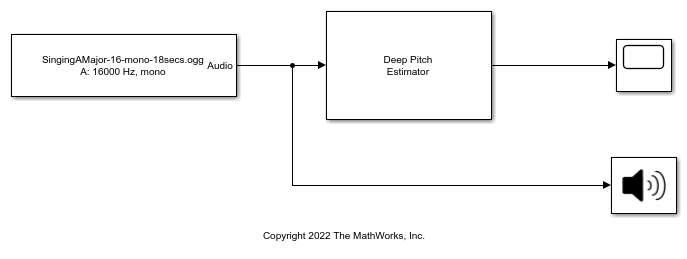Deep Pitch Estimator
Libraries:
Audio Toolbox /
Deep Learning
Description
The Deep Pitch Estimator block uses a CREPE pretrained neural network to estimate the pitch from audio signals. The block combines necessary audio preprocessing, network inference, and postprocessing of network output to return pitch estimations in Hz. This block requires Deep Learning Toolbox™.
Examples
Ports
Input
Output
Parameters
Block Characteristics
Data Types |
|
Direct Feedthrough |
|
Multidimensional Signals |
|
Variable-Size Signals |
|
Zero-Crossing Detection |
|
References
[1] Kim, Jong Wook, Justin Salamon, Peter Li, and Juan Pablo Bello. “Crepe: A Convolutional Representation for Pitch Estimation.” In 2018 IEEE International Conference on Acoustics, Speech and Signal Processing (ICASSP), 161–65. Calgary, AB: IEEE, 2018. https://doi.org/10.1109/ICASSP.2018.8461329.
Extended Capabilities
Version History
Introduced in R2023a


